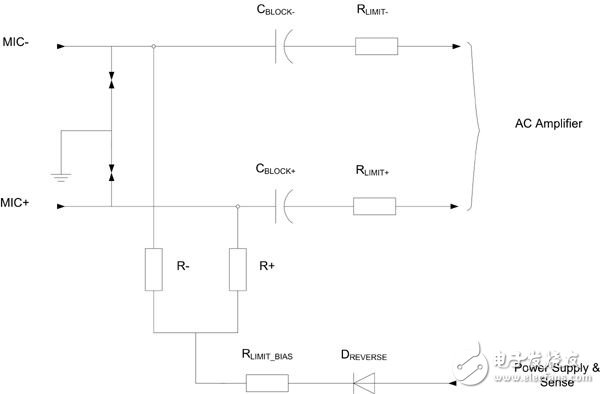Car buyers are increasingly demanding more advanced car infotainment systems with higher levels of functionality and higher quality sound, and they are beginning to expect lower noise levels in the car. As a result, more and more common electronics engineers specify microphones in their system design, so that car passengers can have a better user experience while traveling.
Typically, there are two types of in-vehicle applications that require microphones—voice detection and active noise reduction (ANC).
1. Voice Detection – Voice streaming to your phone requires this feature. It is usually carried over Bluetooth wireless synchronous transmission.
2. ANC – for road noise reduction (RNC) and engine level noise reduction (EOC) to reduce road and engine/exhaust noise, respectively. This feature is implemented using advanced digital signal processing (DSP) algorithms and amplifier and load speaker outputs of the infotainment system to produce amplified anTI-phase noise. Today, the application of ANC technology to RNC and EOC for internal combustion engine vehicles is increasing dramatically.
While voice transmission tends to use a single (omnidirectional or unidirectional) microphone, three-dimensional ANC relies primarily on multiple error microphones located in different parts of the interior of the cabin. Critical to these applications is the extremely low noise offset. In addition, because they are located outside of the infotainment system, effective fault detection is also required in both cases.
Key microphone power requirements
Typically, car microphones consume relatively low current, depending on the microphone impedance and the type of integrated amplifier stage. A typical unidirectional microphone can consume as little as 0.5 mA, while an omnidirectional beamforming microphone can consume 20 mA. Depending on the required signal-to-noise ratio (SNR) and the type of integrated amplifier, the supply voltage may vary from 1.0 V to 15.0 V, but most supply voltage levels range from 5.0 V to 8.0 V. Offset microphone input lines require a specified power supply with low noise and low power supply rejection ratio (PSRR), especially in the human ear. This requirement requires a low noise linear regulator.
The location of the microphone away from the infotainment system also complicates the situation. Externally located loads present the risk of incorrect connections during assembly and maintenance. Therefore, the microphone power supply needs to be able to detect the wrong connection and protect itself.
Principle of microphone power
The integrated microphone regulator provides an attractive alternative to discrete or high-side switches and offers ample work advantages. The built-in current mirror makes it possible to detect the microphone and diagnose fault conditions in the load – this is especially important during car assembly and maintenance, as there may be an infotainment system, a microphone or a cable failure or assembly error between them during this time. risks of. Therefore, there is a possibility that the microphone regulator output (VOUT) is short-circuited to the ground, open circuit, or has a low probability of short-circuiting the battery.
Microphone regulator advantage
A typical discrete diagnostic and protection circuit can contain up to 20 discrete components, involving high assembly costs, complex failure modes and effects analysis, and the consumption of valuable microcontroller resources to perform command and control functions. In contrast, the integrated microphone regulator is a single IC that requires only a small number of external small signal components. In addition, the integrated solution carefully controls technical parameters such as current-limit accuracy and current mirrors, making it easier to develop fault strategies, fault detection thresholds, and worst-case analysis. The programmable output current and current-limit levels and IC enable functions are controlled by a microphone regulator to achieve flexibility in the circuit programming capabilities inherent in discrete circuit designs. Provides accurate and adjustable output voltage regulation, including well-defined loop stability limits, indicating that the fully protected output can be set to the target output voltage associated with the microphone input requirements, coupled with a low-cost standard equivalent series A stable loop of the resistance (ESR) output capacitor.

Figure 1: Example of a discrete microphone bias circuit (without detection or troubleshooting)
AC Amplifier: AC Amplifier
Power Supply & Sense: Power and Sensing
E-T5 Uv Lamp,Portable Uv Lamp,Home Uv Lamp,Sterilization Uv Lamp
t-smartlight , https://www.t-smartlight.com